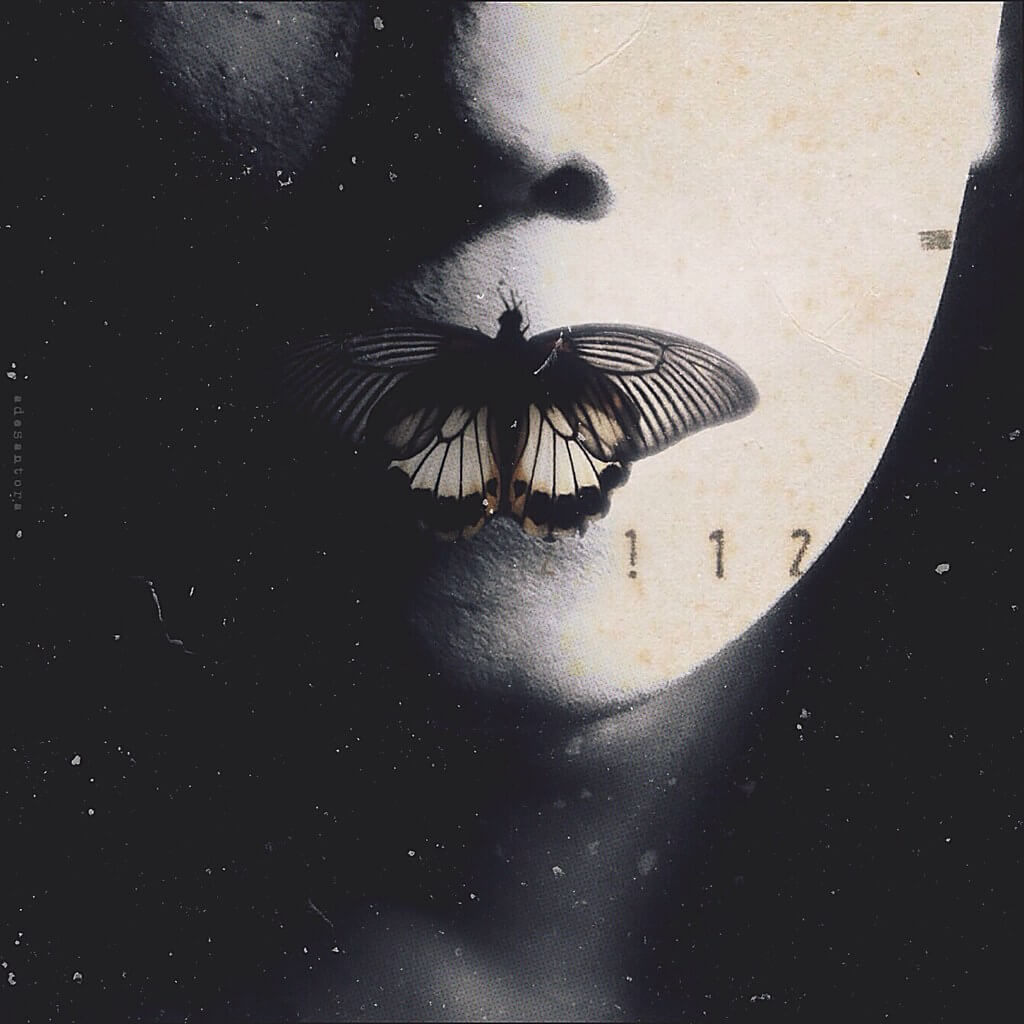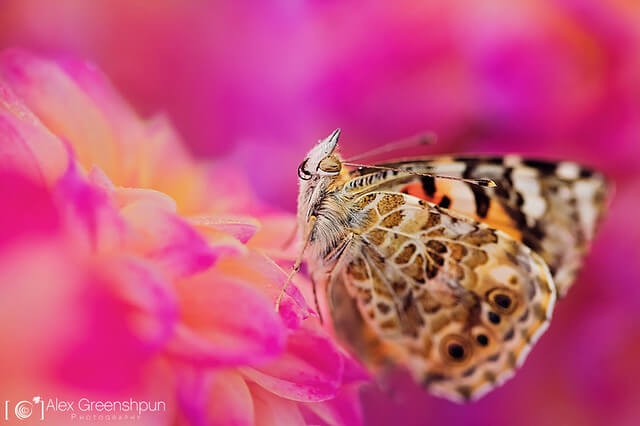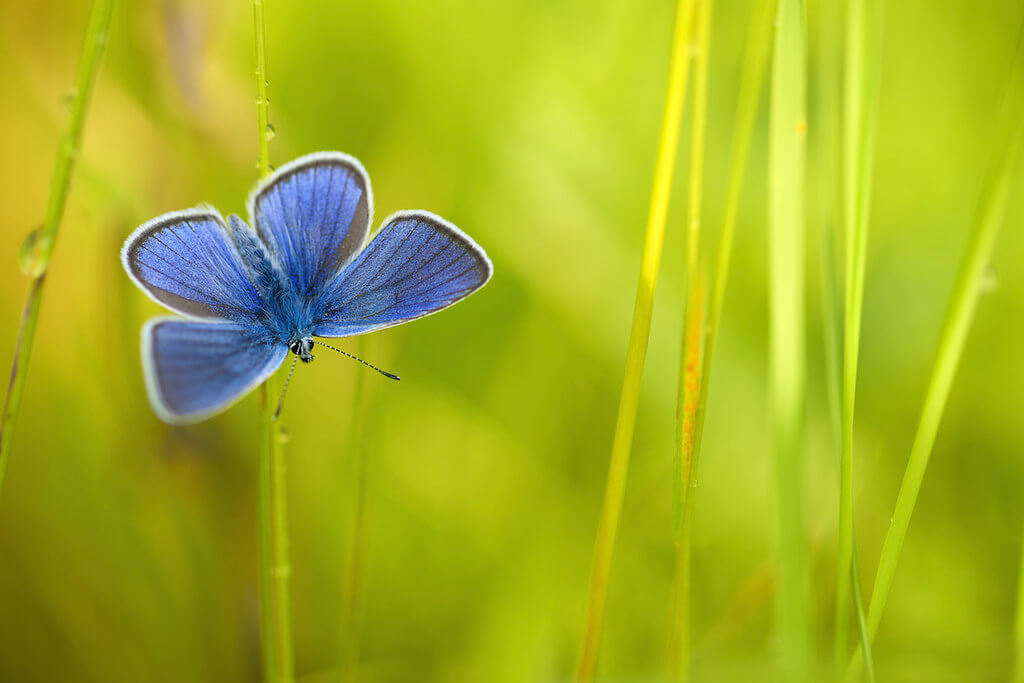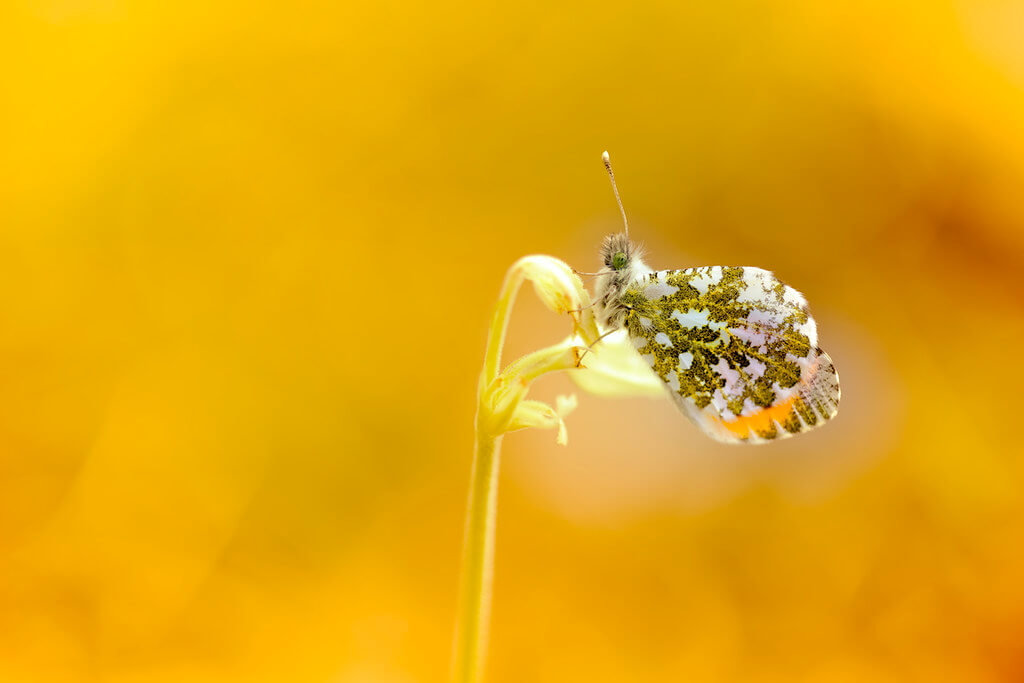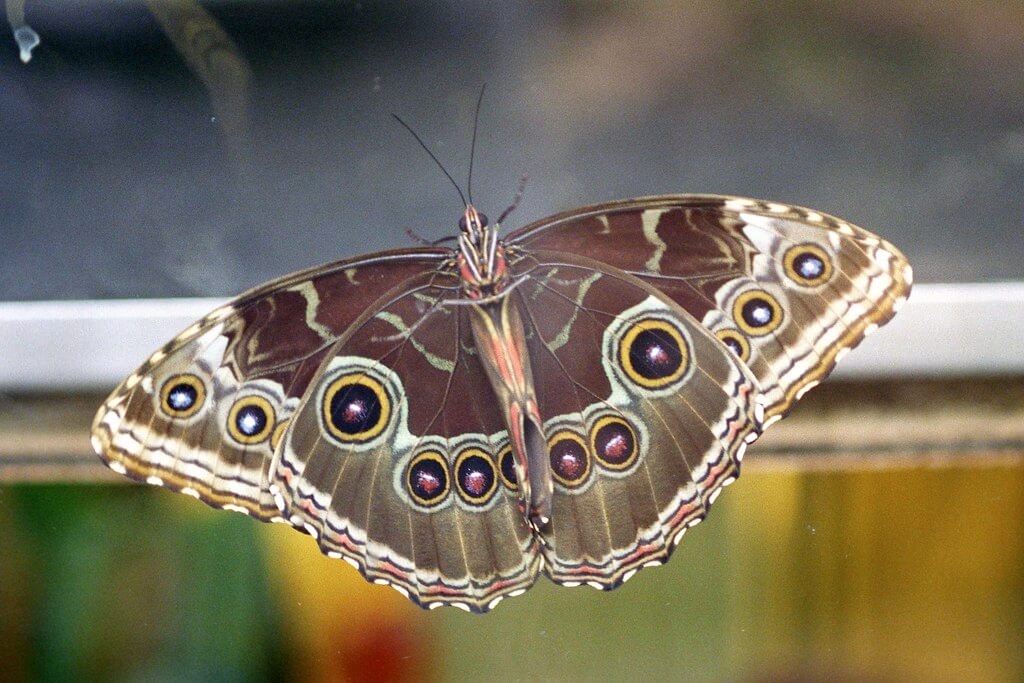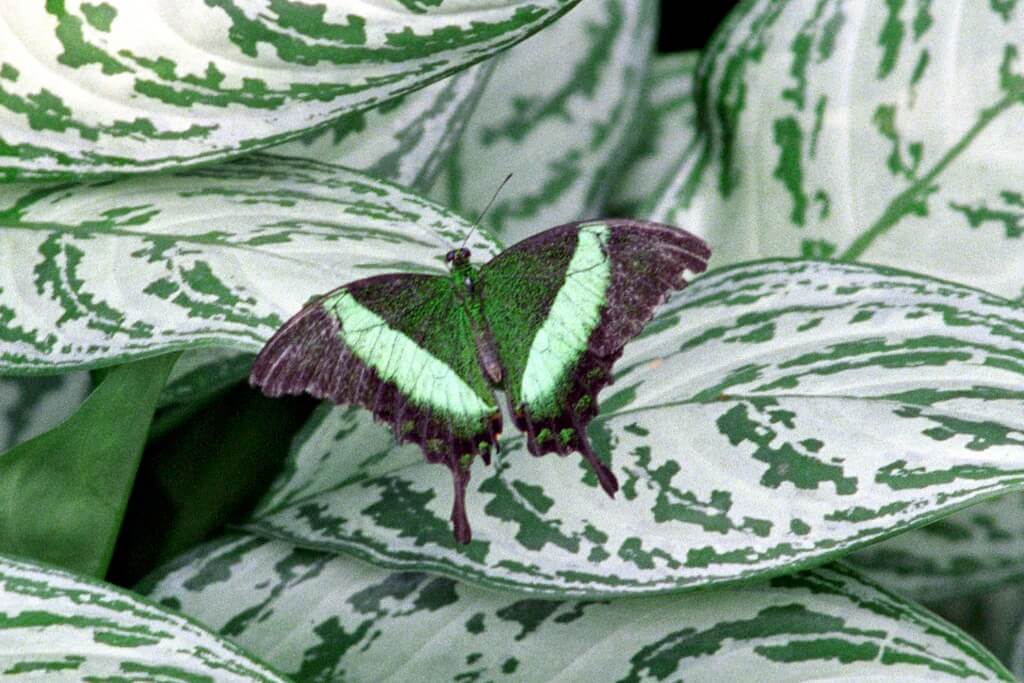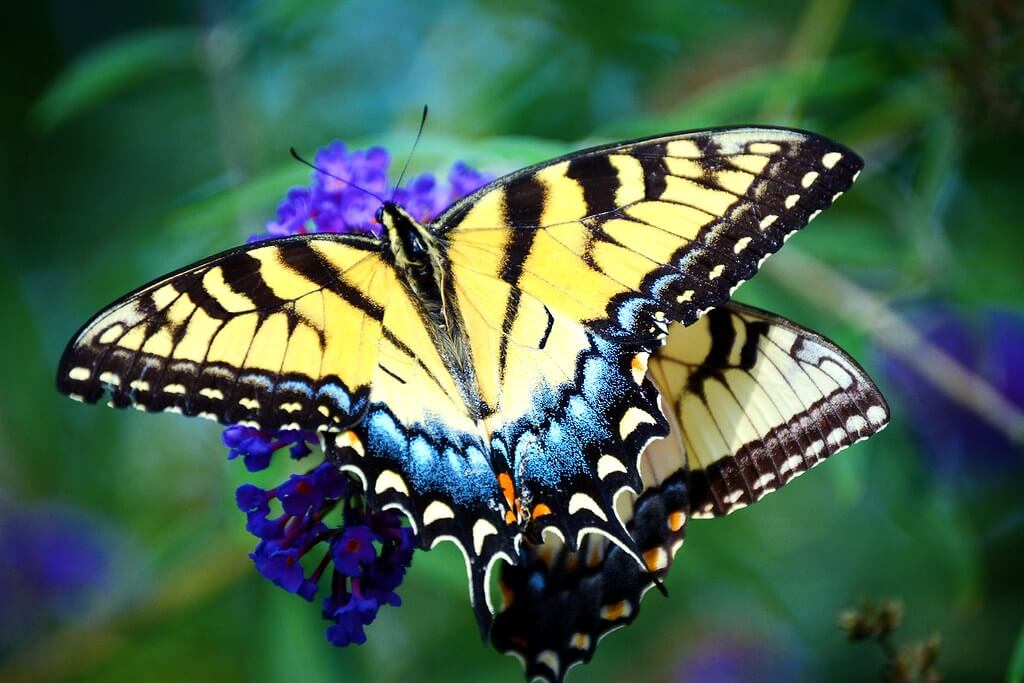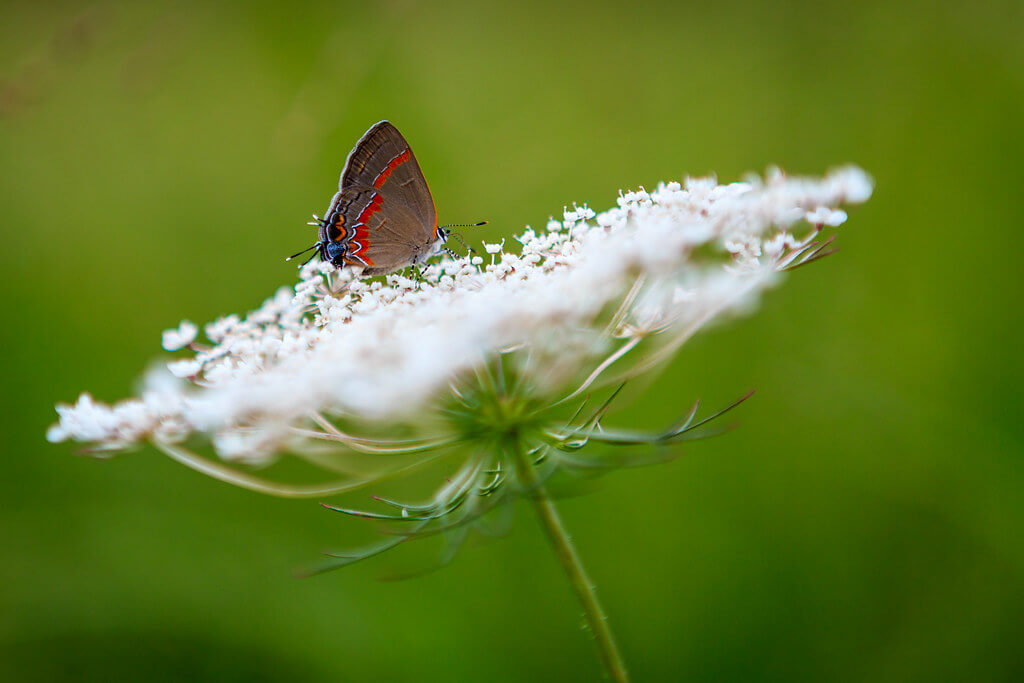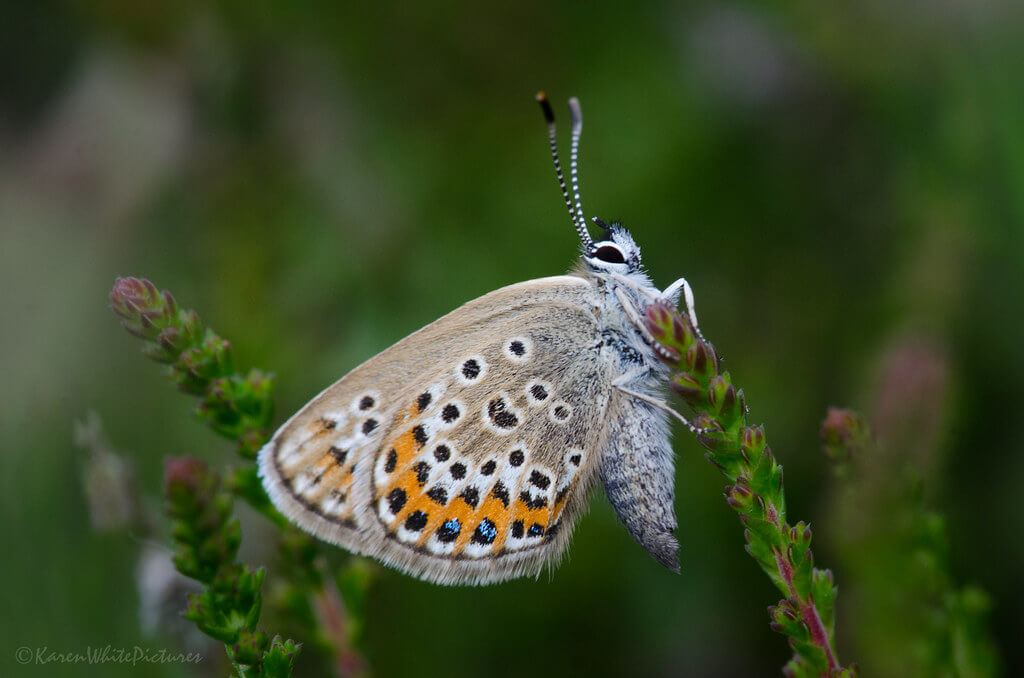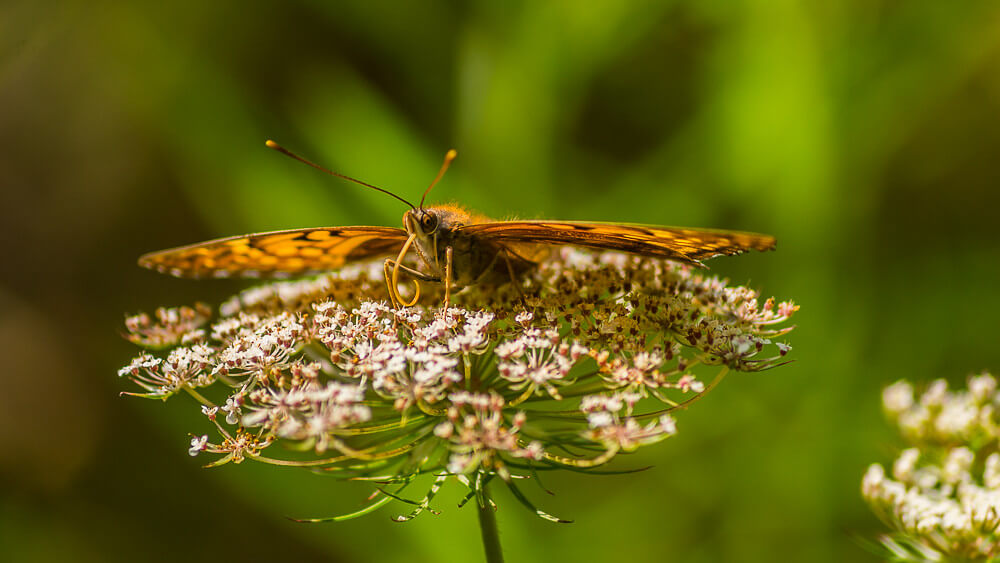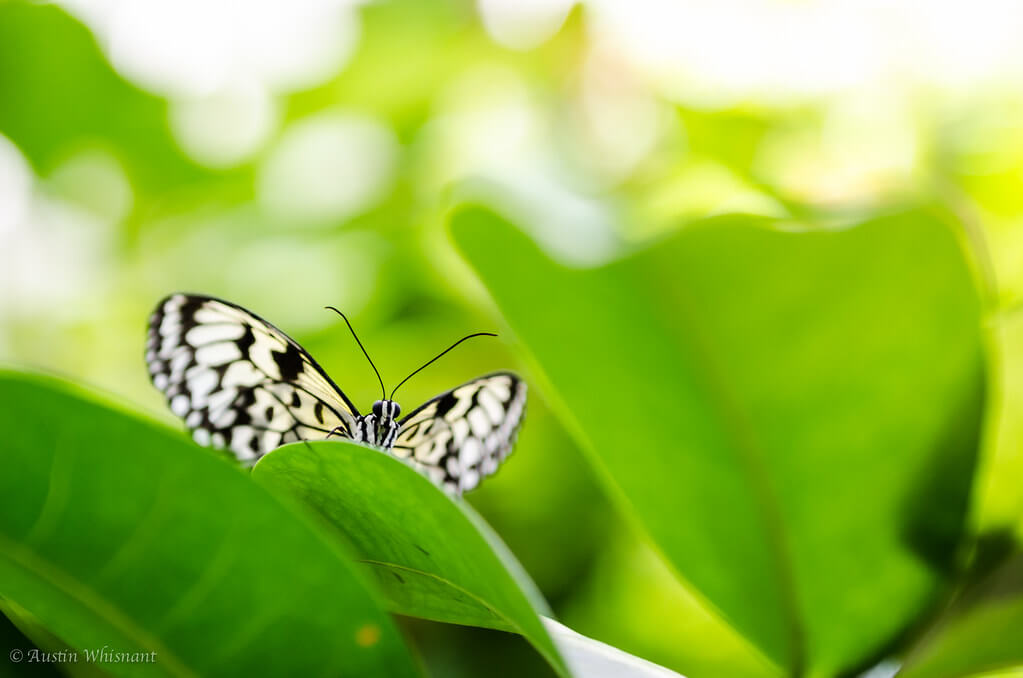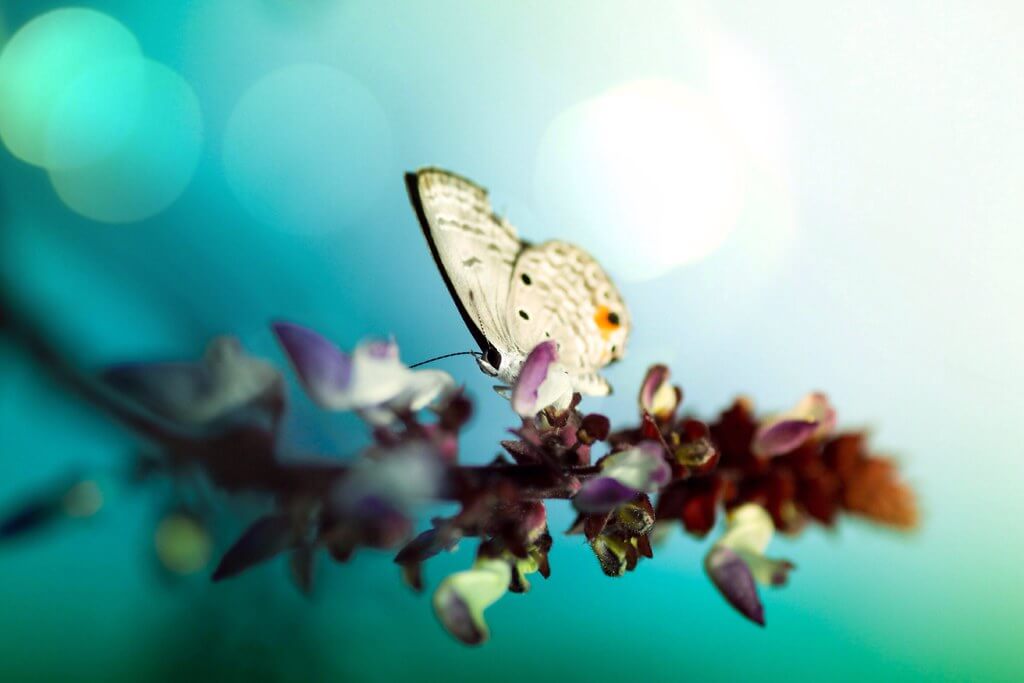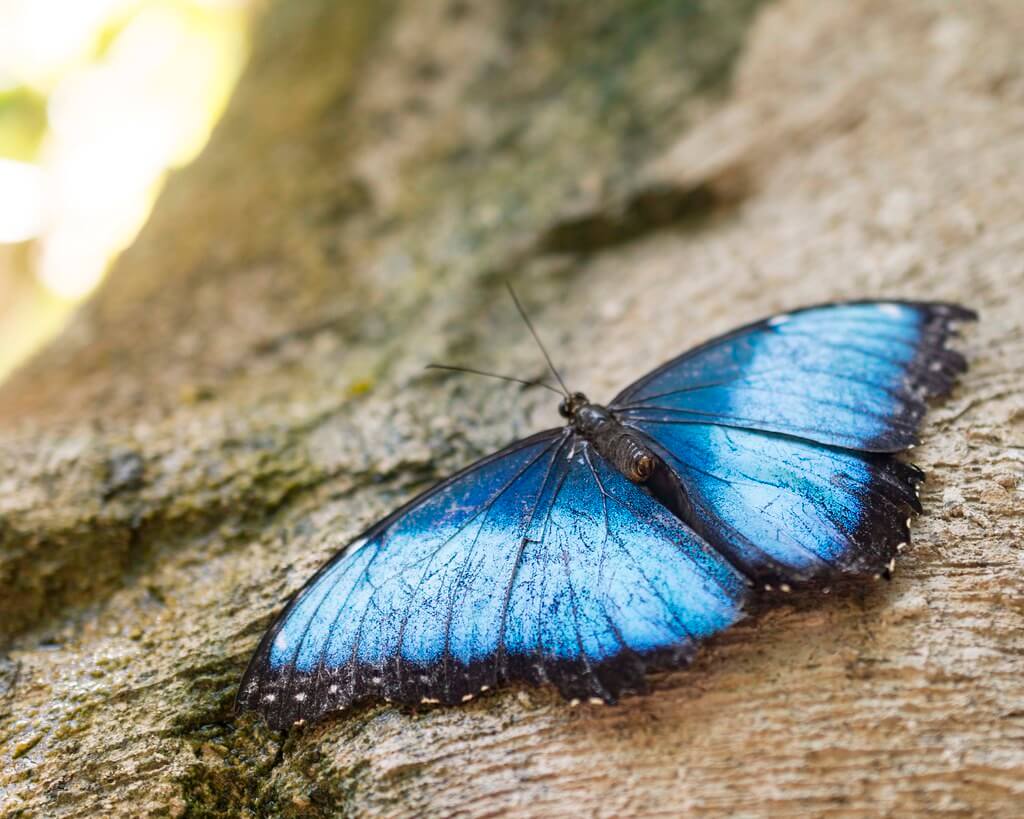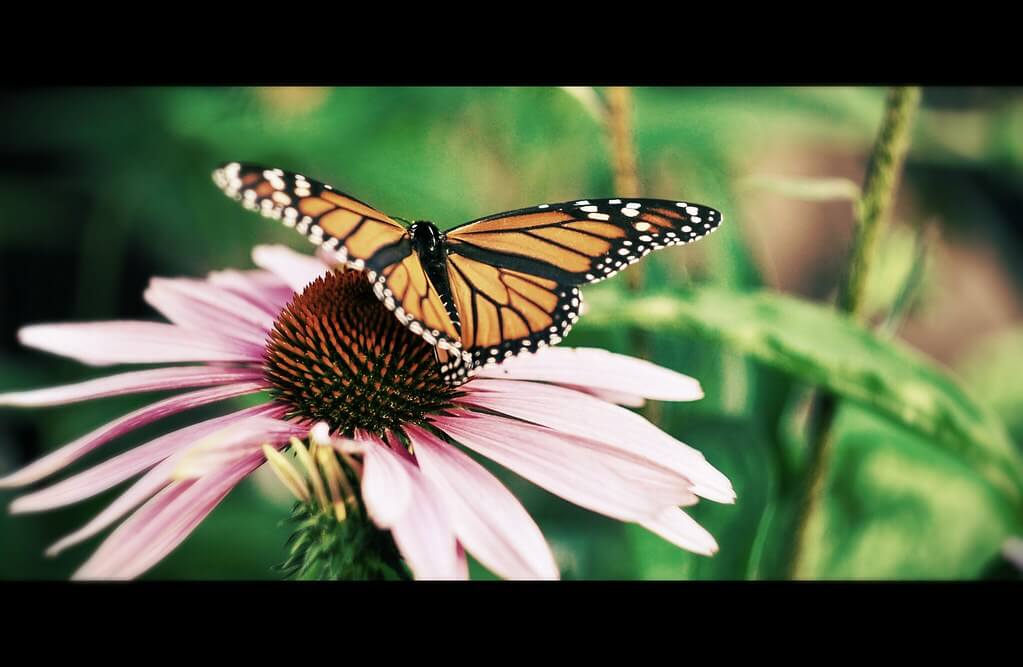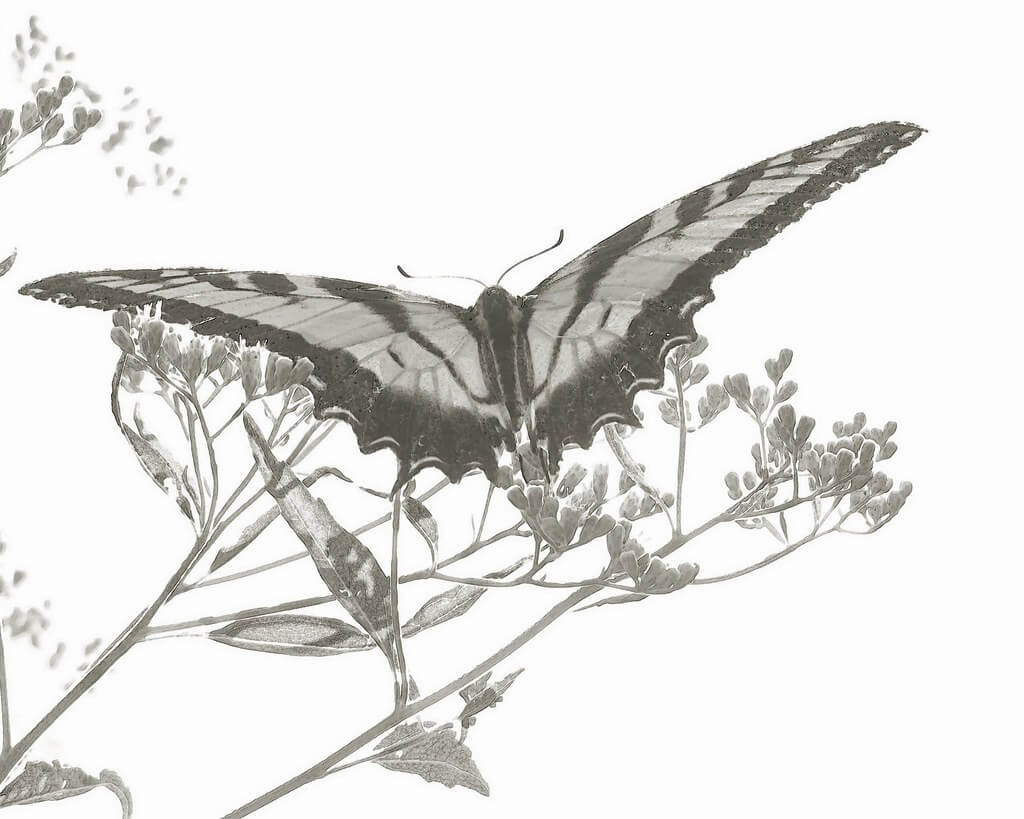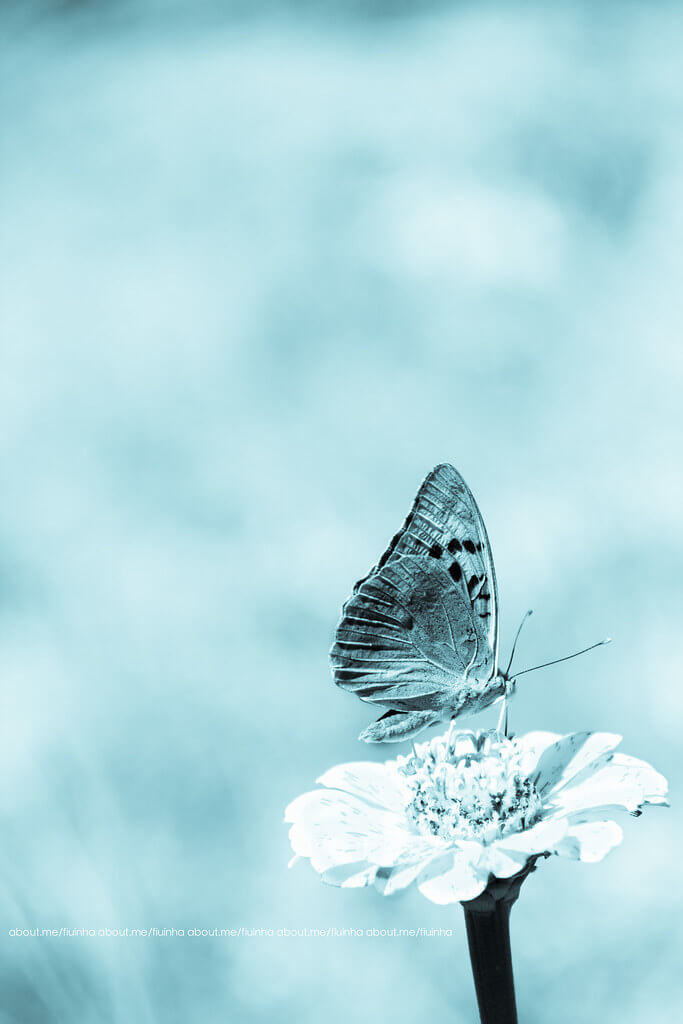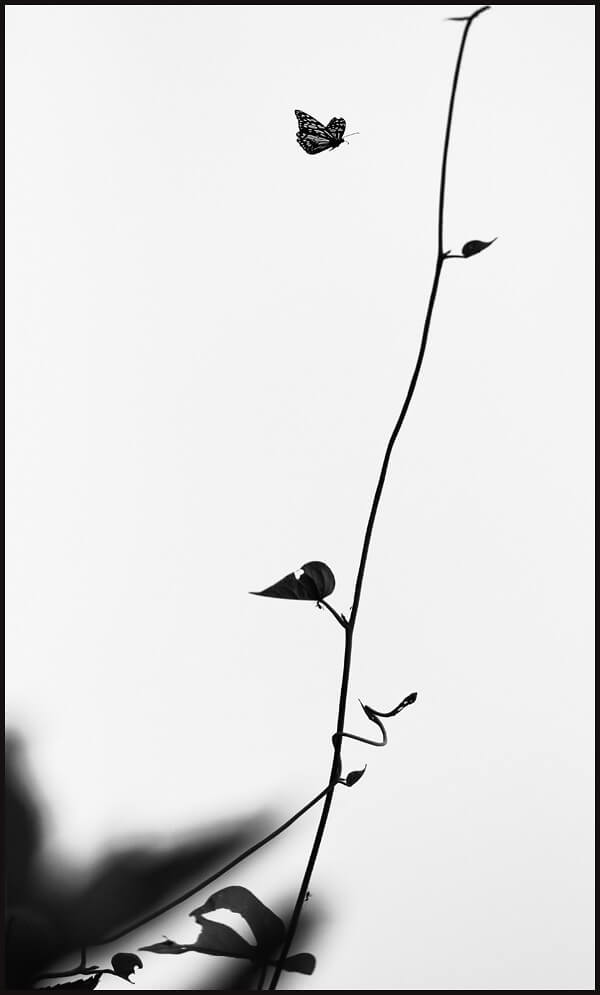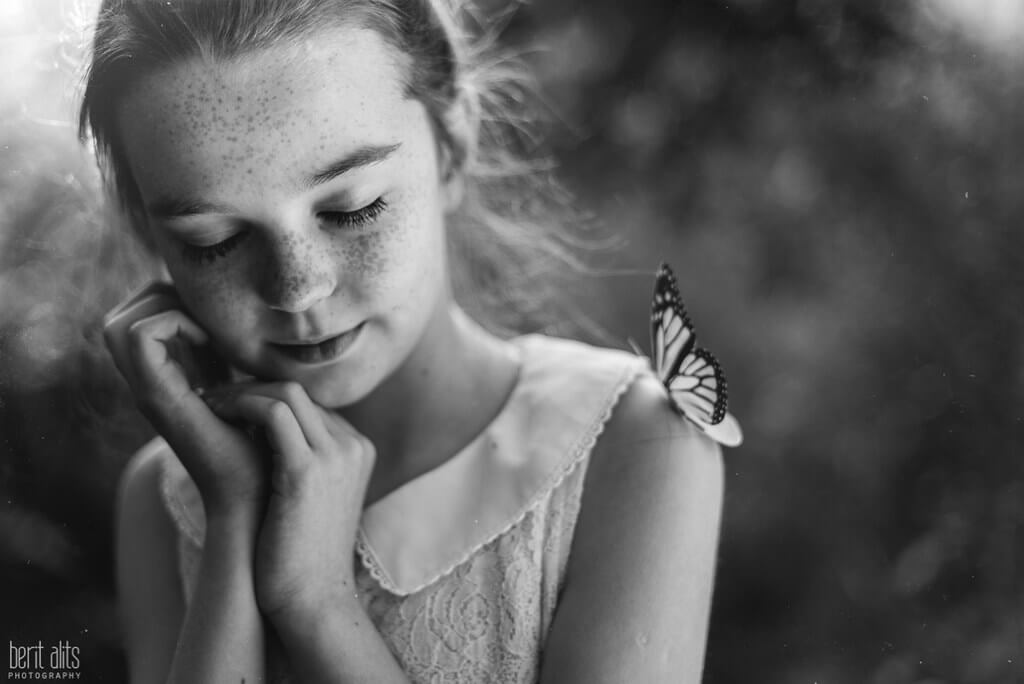Like any insect, butterflies are an excellent subject for macro photography. They have tiny details and interesting textures you can focus on. But unlike many insects, butterflies are also great subjects from far away.
Thanks to their vibrant colors, butterflies stand out even from a distance, so you can get beautiful photos of them regardless of your camera. Ultimately when photographing butterflies, your gear is less important than your location and willingness to wait.
To get nice butterfly photos, your best bet is to go somewhere with a lot of butterflies, like a butterfly conservatory or a flower garden. Then, with so many butterflies around, you won’t feel rushed to get a good shot right away. Instead of running after a single butterfly, you can take your time experimenting with different compositions and techniques, switching to a different butterfly if one flies away.
Besides choosing a butterfly-friendly location for your shoot, you can use the following ideas to increase your chances of getting a lovely shot. Each idea is paired with inspiring photos of butterflies, so you can see how other photographers have worked with the same concept.
Ideas for Beautiful Butterfly Pictures
All of the following images were selected from our creative Flickr community. If you get a cool photo of a butterfly, be sure to add it to the group so we can admire your work!
Use a single color as a background.
Most butterflies have intricate designs and bright colors on their wings. If you want to capture this complexity, try to use a single color as a background. Otherwise, if the background has several different colors, it may compete for the viewer’s attention.
If the background does have several vibrant colors, you can work with bokeh to minimize their distraction. Besides making the background soft and beautiful, bokeh can help to blend shades of color, so they appear as one.
Cade Smith – Eastern Tiger Swallowtail
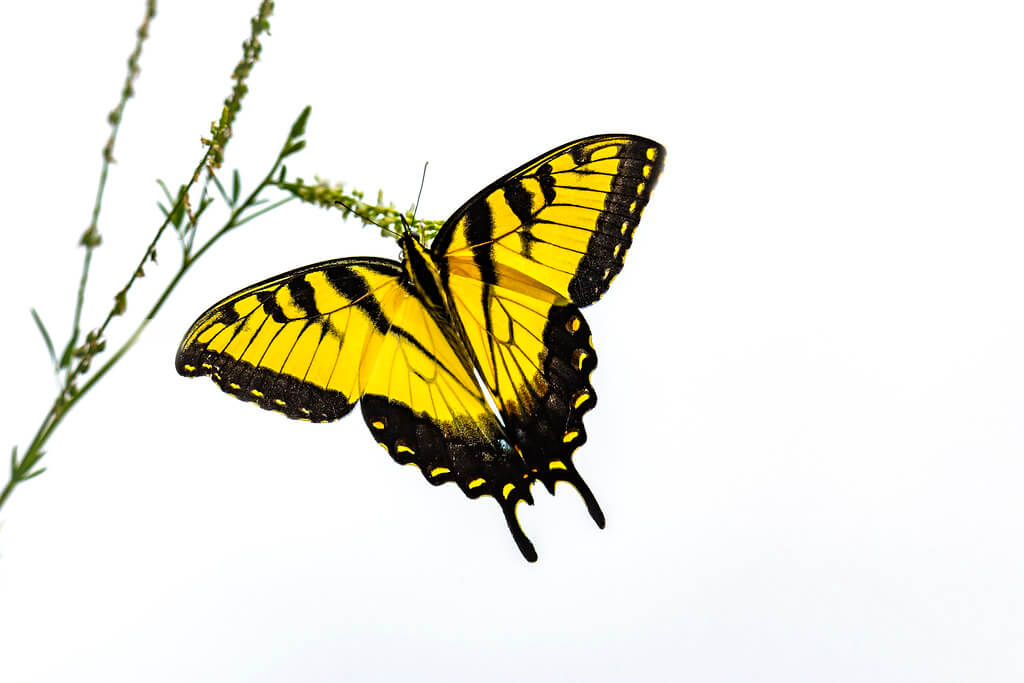
Carina – Broken wings can still fly
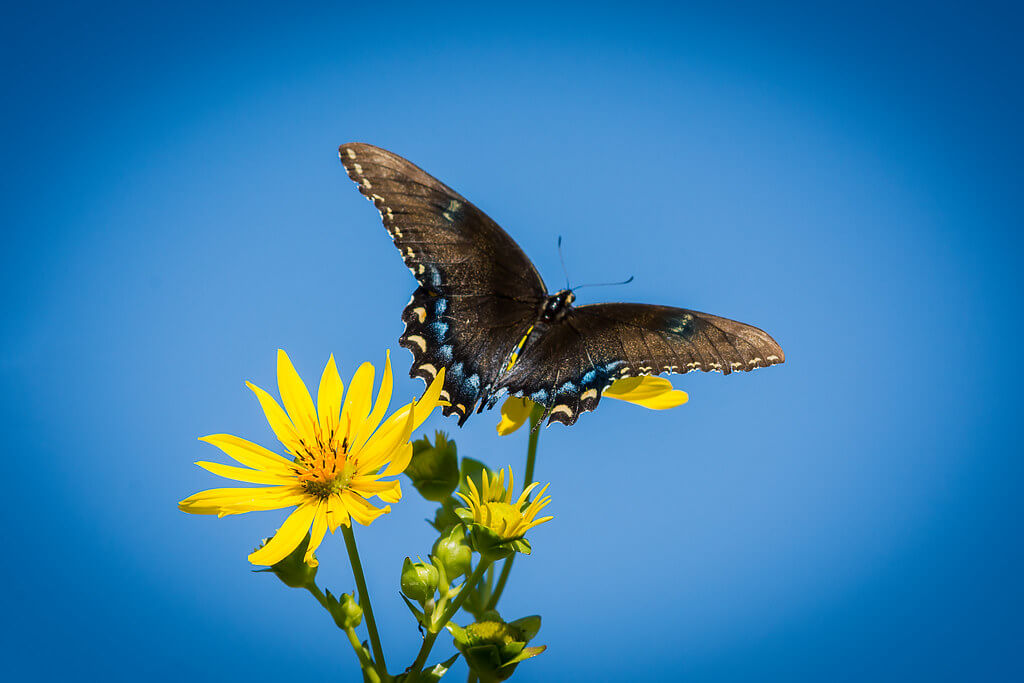
Take a close-up from above.
Another way to bring all attention to the butterfly’s wings is to take a close-up or macro photo. Then, with the butterfly wings filling the frame, the background won’t matter as much. Although it’s still a good idea to use a single color as a background, you can get away with more details and less blur without distracting the viewer.
Markku Huttunen – Morpho peleides
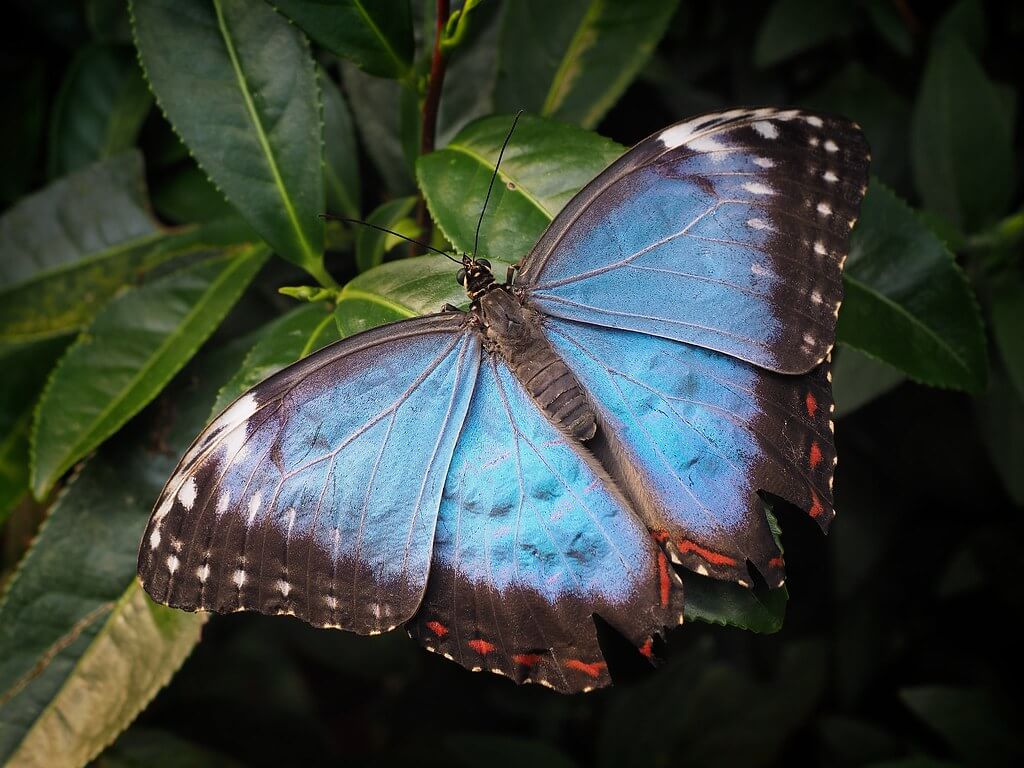
Robert Felton – Small Tortoiseshell – Aglais urticae
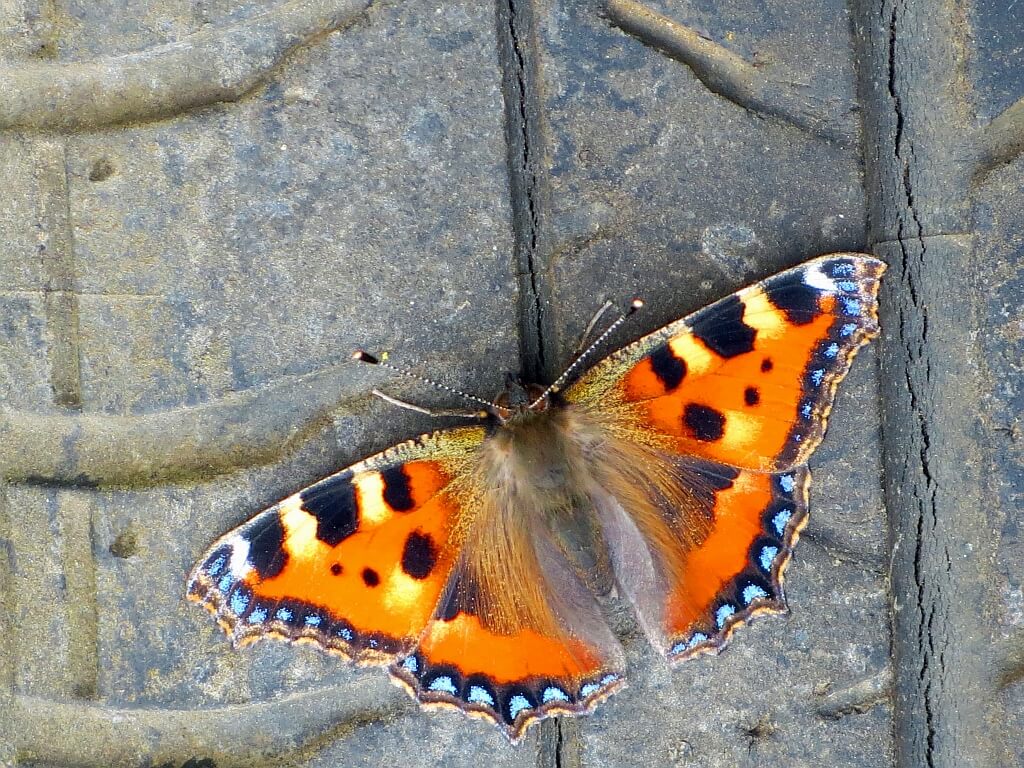
Karen White – small pearl bordered fritillary
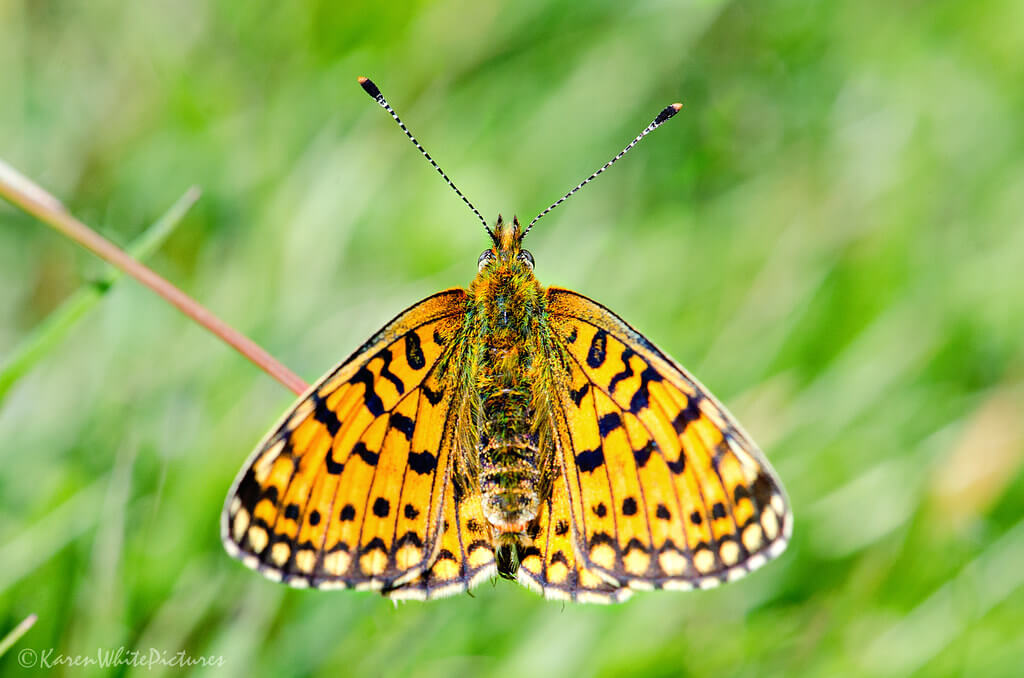
Hemzah Ahmed – Emerald Peacock
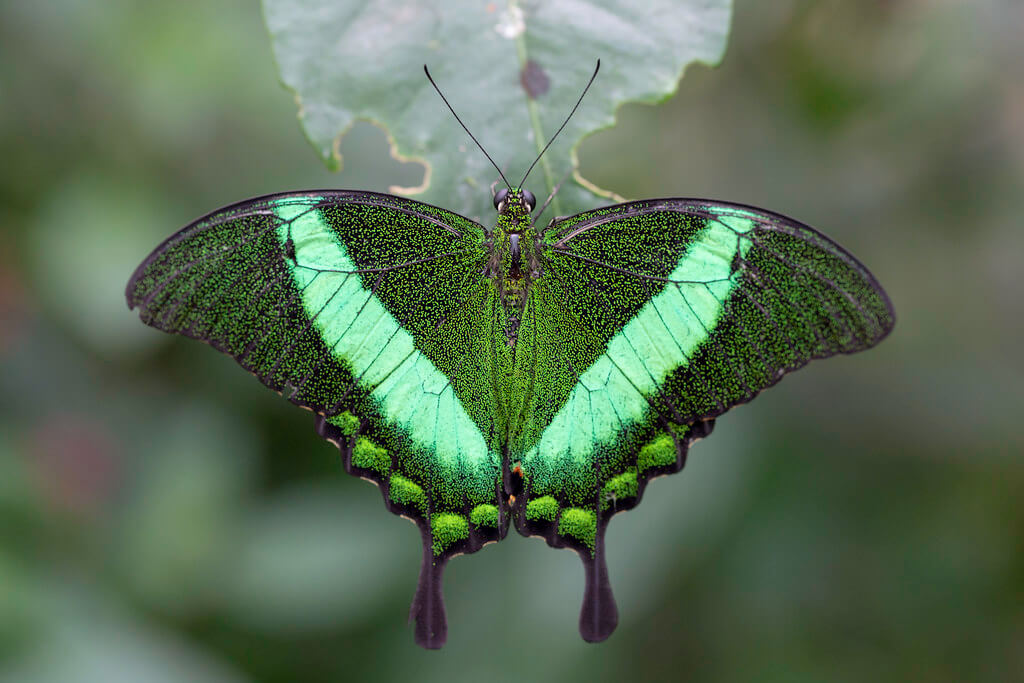
Wait for the butterfly to spread its wings…
To photograph the top side of a butterfly’s wings, you’ll naturally need to wait for the wings to be spread. But even if you aren’t taking a close-up of the wings, it’s worth waiting for open wings, since the butterfly will be larger and more noticeable then.
Especially for photos taken at a distance or from above, butterfly wings are easier to spot when they’re open rather than closed. It may take some patience, but the final shot will be worth the wait.
Barbara Schultheis – Abundance of Butterflies
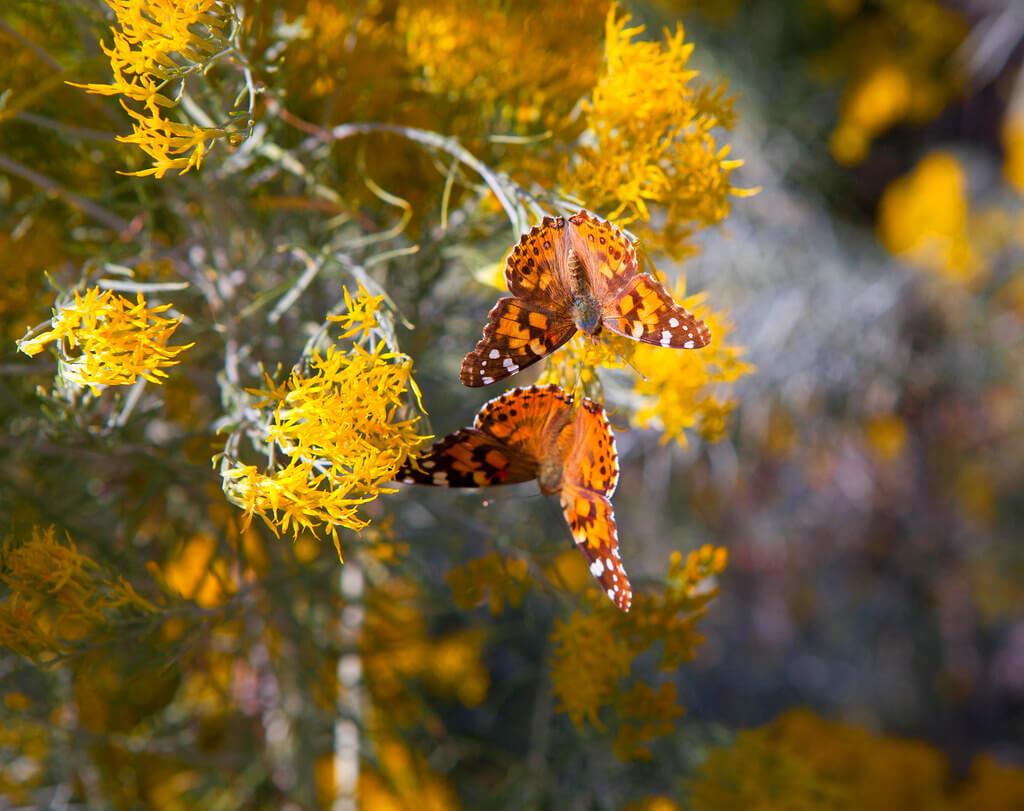
John Rosemeyer – This Morning in the Park
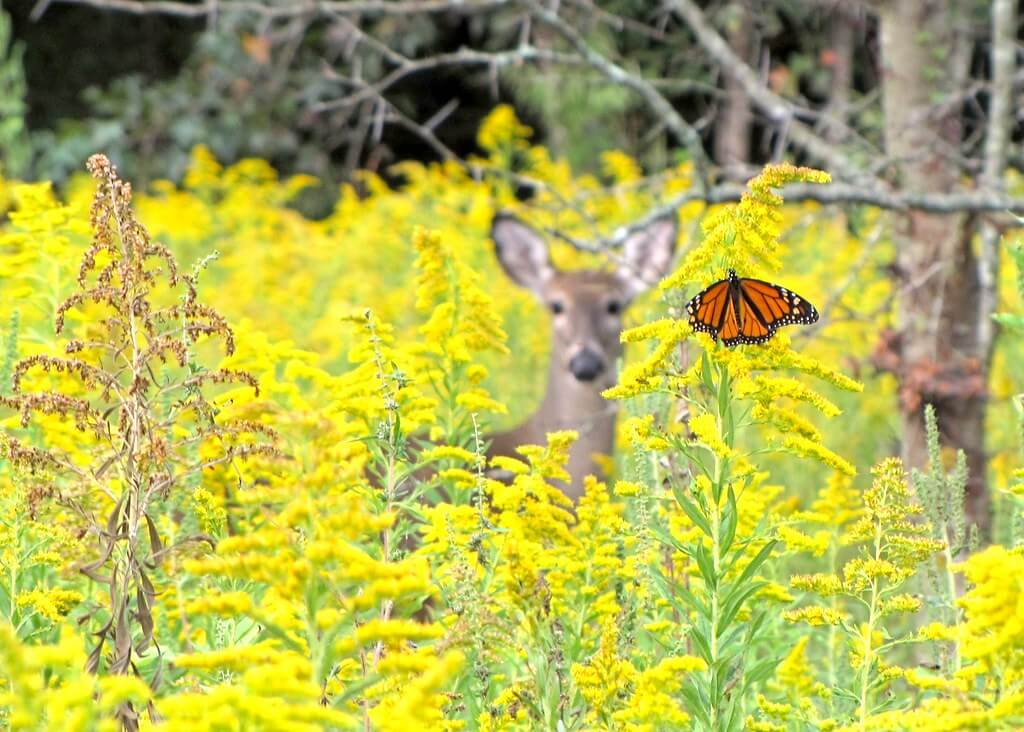
Austin Whisnant – White-barred Longwing
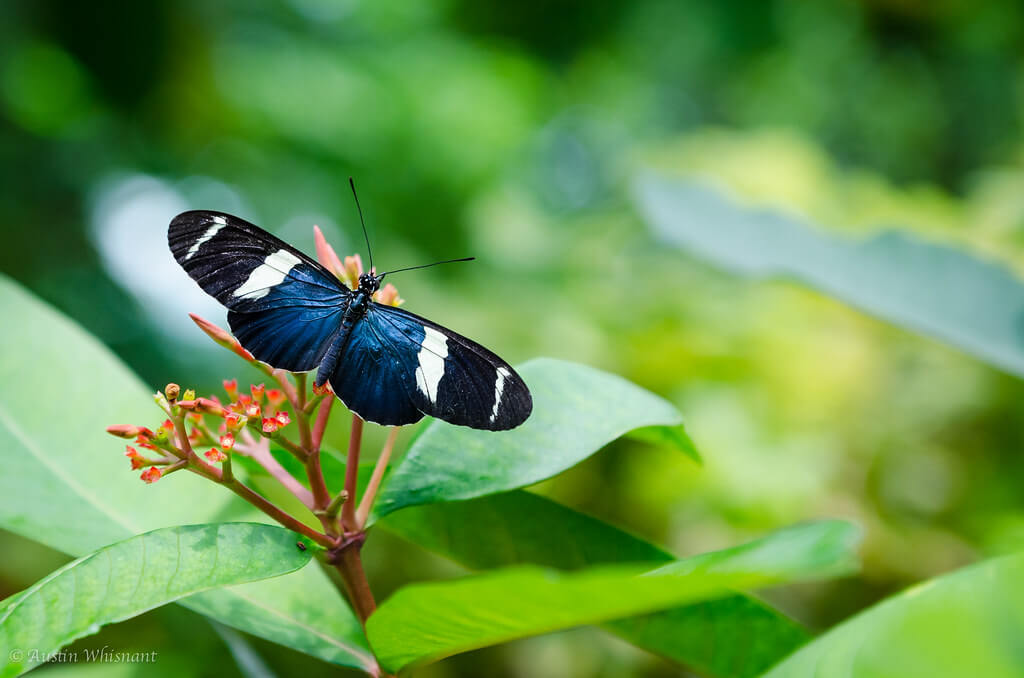
Or take a side shot with closed wings.
If the butterfly’s wings are closed, you’ll likely get the best photo if you shoot from a side angle. Just like with open wings from above, closed wings will make the butterfly larger and more noticeable from the side.
If the butterfly is moving around and making it difficult to find a good side angle, try waiting until it has settled on a flower and is drinking nectar. Then, it’ll likely stay still for longer.
Bernie Kasper – Monarch Portrait

Sherri Yezbick-Taylor – Tiger Longwing
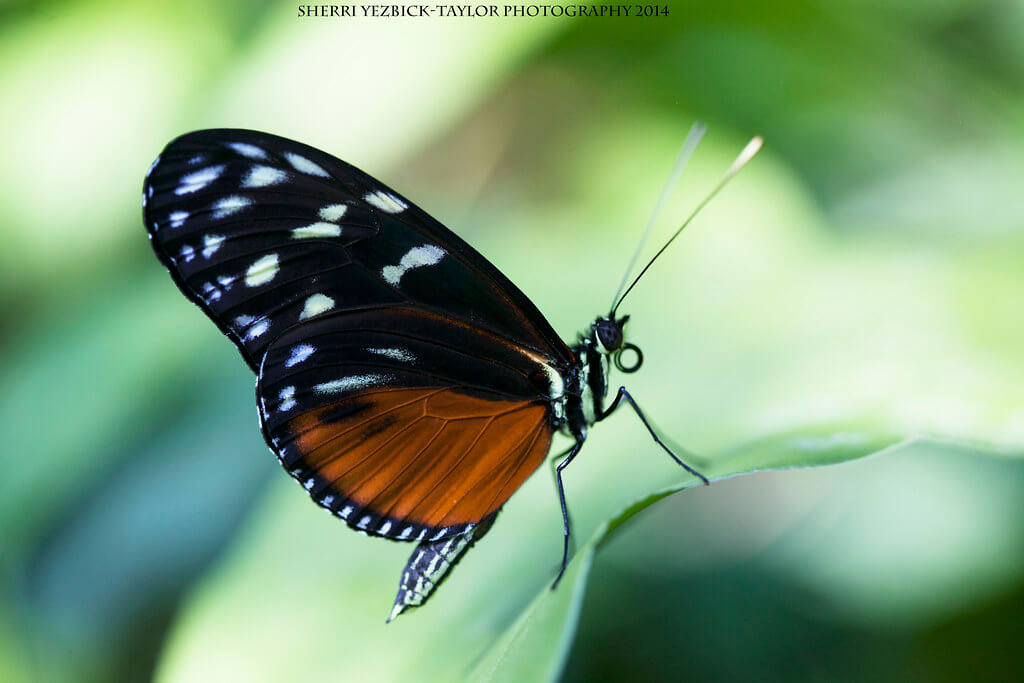
Joanne Levesque – Porte-queue geai/Tailed jay
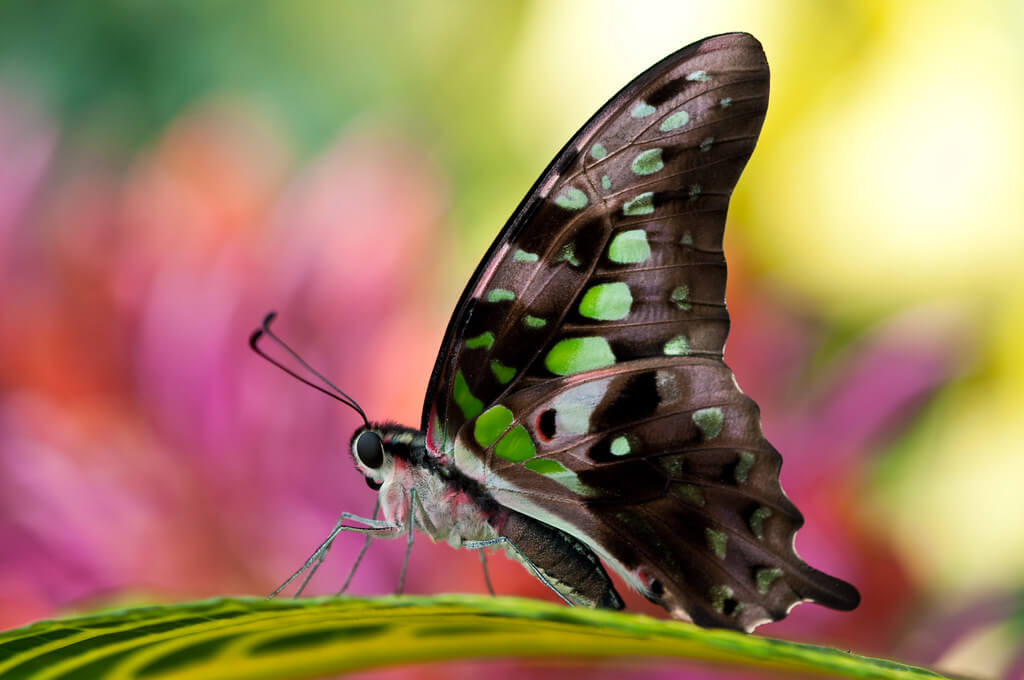
Try a lower angle.
Shooting from above with open wings or the side with closed wings aren’t your only two options. You can get unique shots from below, too. Then, you might capture the butterfly hanging upside down or peeking over the edge of a leaf.
If you can’t get below the butterfly, you can still try lowering your angle and photographing the butterfly from the front or back. This lower angle can create a feeling of depth, absent in shots from directly above. It can also make the butterfly look larger, as you’re bringing the camera to its level.
Tuhin alom Photography – Butterfly

Focus on the flowers.
Butterflies are so lovely that it’s easy to obsess about them and overlook other subjects and possibilities. For instance, instead of chasing butterflies for a close-up, you can step back and capture more of the environment, particularly the flowers.
Focusing on the flowers can take away some of the pressure of photographing butterflies, since you don’t have build your entire composition around their unpredictable movements. You can choose your angle based on the flowers, then wait for a butterfly to join the scene as an added bonus.
TroyMarcyPhotography – Peering Wings of a Common Buckeye Butterfly
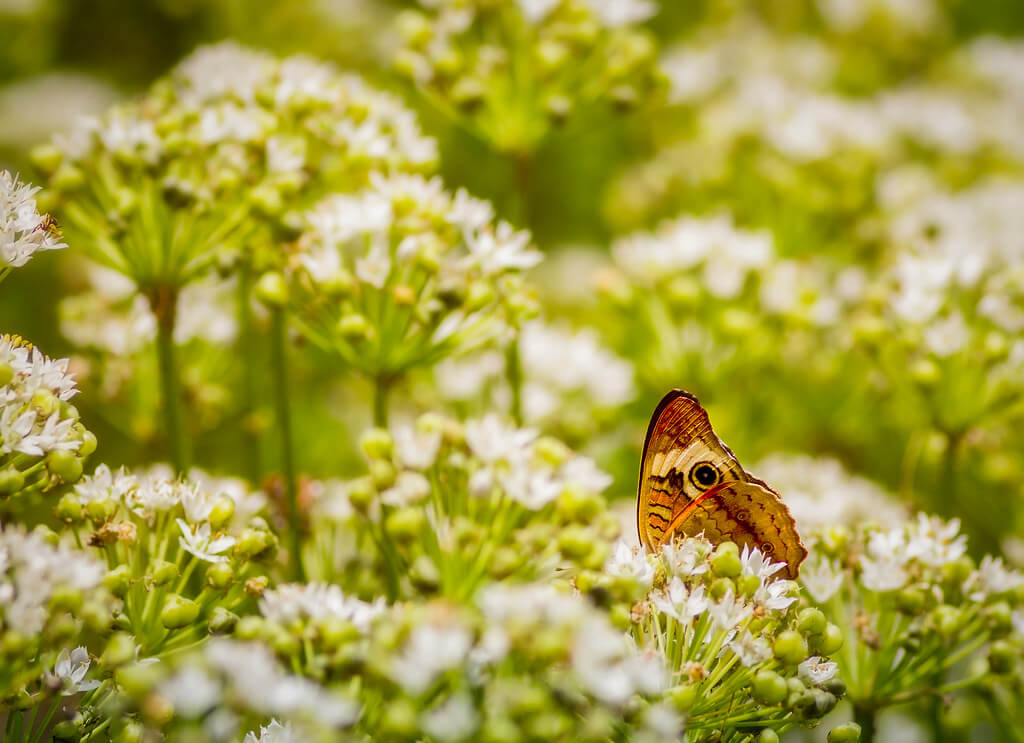
Manuel Buetti – Il fiore e la farfalla
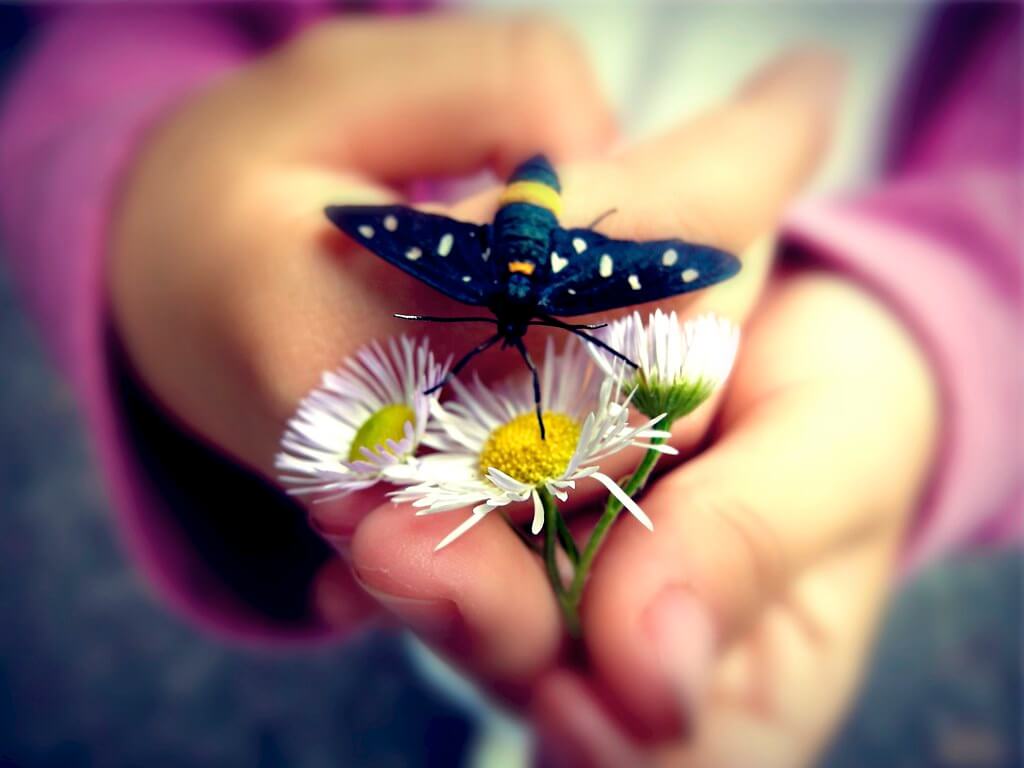
Jimmy Cox – Narrow Leaf Zinnia with Butterfly
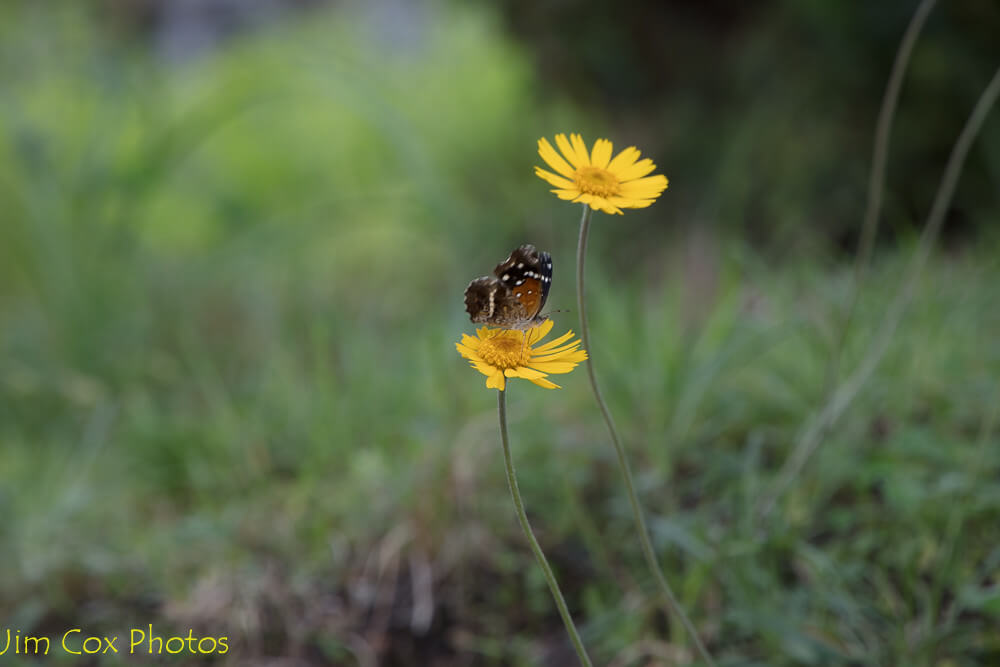
Experiment with monochrome.
Black and white can seem like a waste when a subject is so colorful, like butterflies. But it’s not actually a waste. It’s an aesthetic choice, which can open up different compositions and moods that you can’t capture with color.
Monochrome can give an image a sense of nostalgia and simplicity, as well as bring the viewer’s attention to shape and contrast. Though colors are striking, they’re not the only way to bring out the beauty of butterflies.
Ignacio Videla Hidalgo – Butter and falls
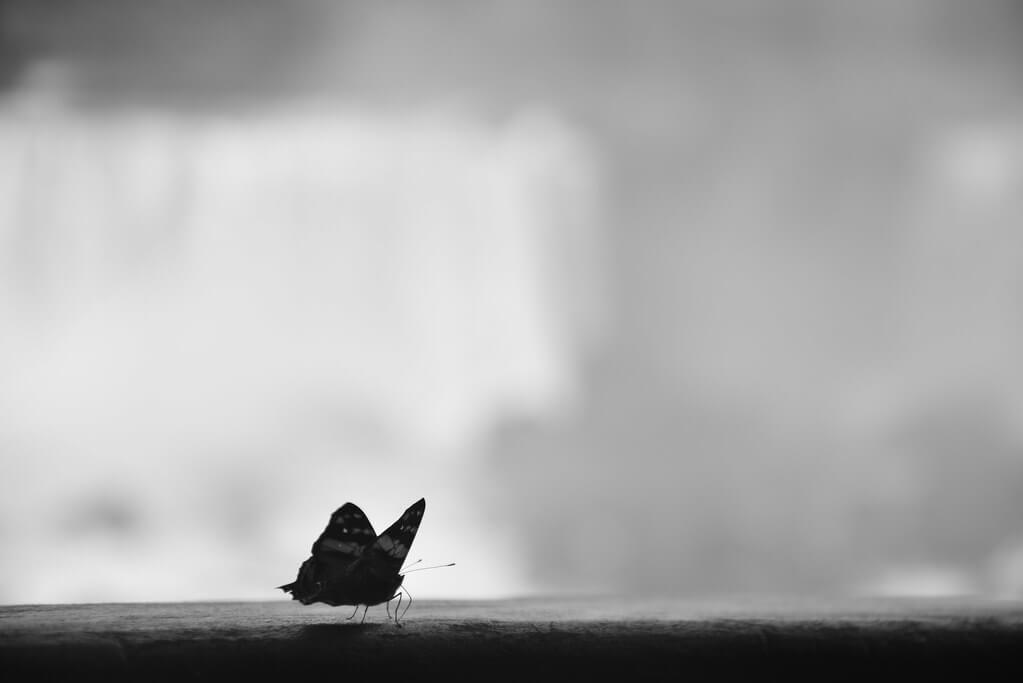
Have fun with “fake” butterflies.
No butterflies in your area? You can still create gorgeous images with butterflies through photo manipulation. You can also get artificial butterflies and add them to your scene. This way, you can capture some of the charm and beauty of butterflies, even if there are no real ones around.
Greig Reid – Ziggy & butterfly
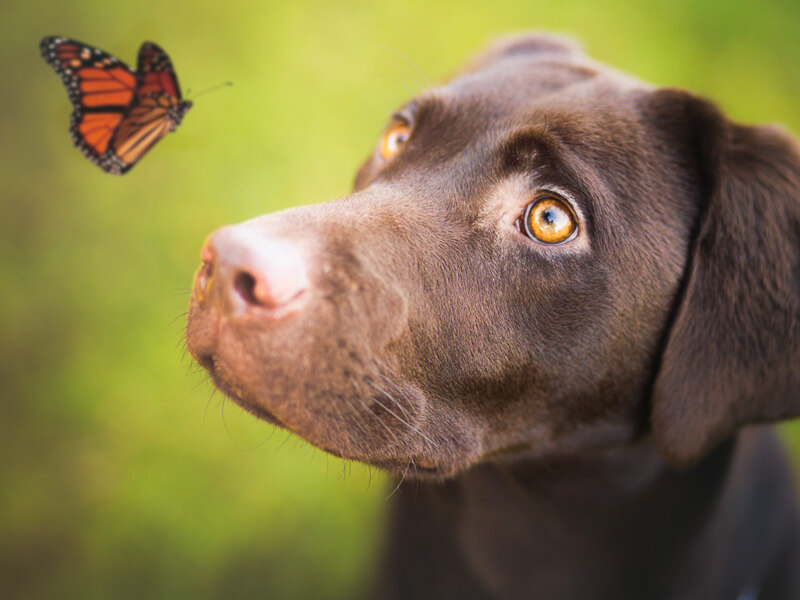
Gideon Way – Where the Butterflies Dance
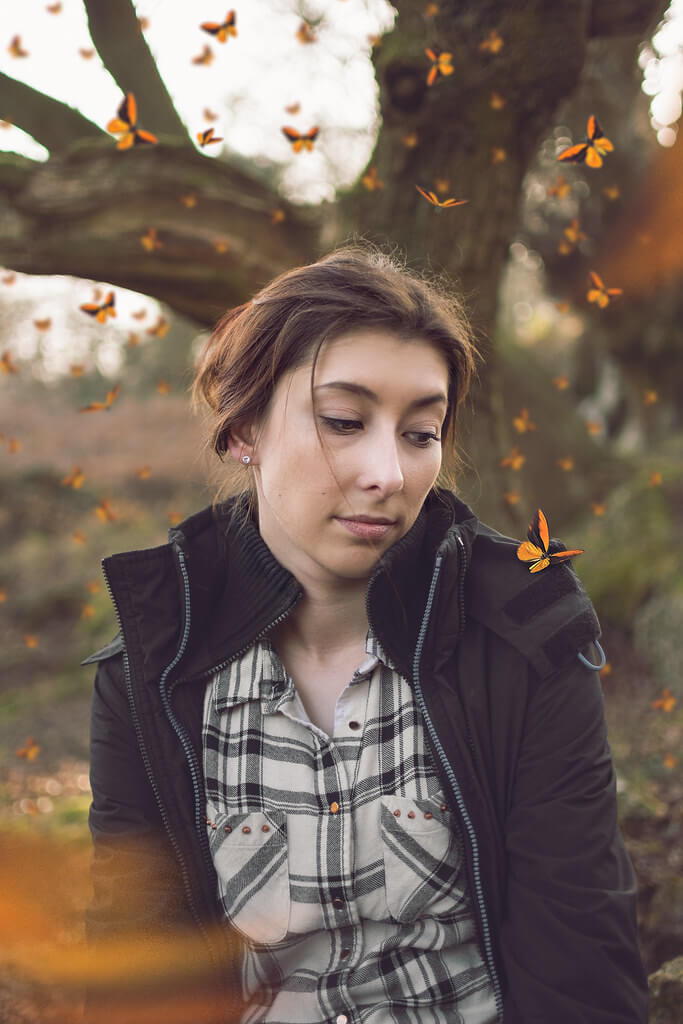
Ade Santora – Butterfly Effect
